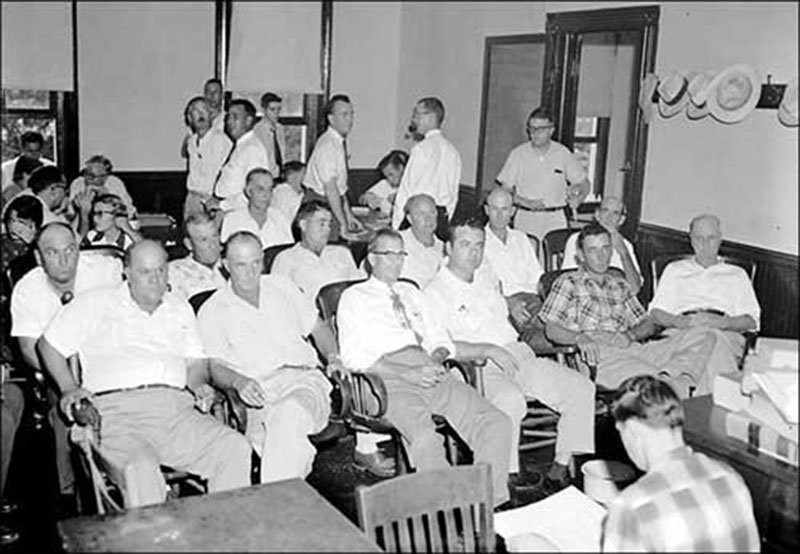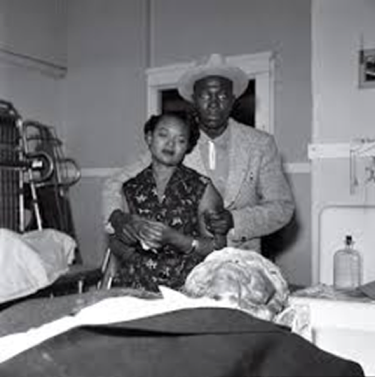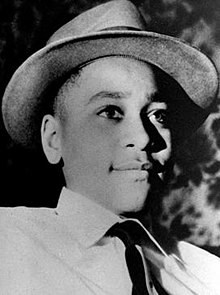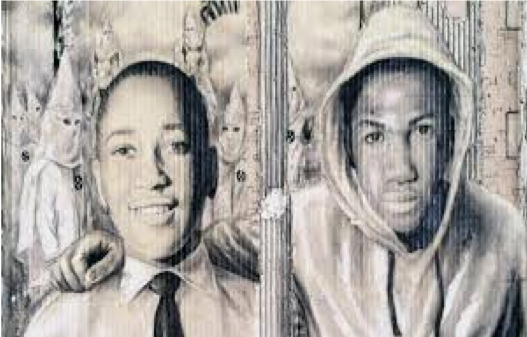NZ Schooling: a case study of administrative evil against Māori?
Written by Etienne DeVilliers, for an assignment on ‘administrative evil’ in ANTH424.
‘Evil’ is a powerful and versatile word. Often when we think of evil, what comes to mind are very deliberate, sadistic or strategic actions. Yet sometimes deeply harmful actions are unintentional.
We all know the consequence of a mistimed word or unthinking act, on an intimate, personal scale. But this is also true on a wider social social scale too, in terms of the negative consequences that can result for certain people or groups, simply from the large scale bureaucratic systems we all take part in. This is what the concept of ‘administrative evil aims’ to capture, and contemporary social scholars argue that more attention needs to be paid to this in the modern, technologically and bureaucratically efficient world we live in (Adams & Balfour 2014).
How does ‘administrative evil’ apply to the NZ schooling system?
Administrative evil is a form of evil which has emerged within a world with a rapidly expanding population which has turned to rationalist systems, such as bureaucracies. Administrative evil relies not on passionate hatred and emotional connections, but rather on a more banal form of evil, characterised by disinterest or unawareness – and thus often lacking in an intentional motive. The example of this that I will be using is the disregard towards the gap in academic results between Māori students and their peers within the contemporary New Zealand schooling system (Page 2008).
I will argue that the harmful consequences of this are a result of administrative evil, where European rationalist approaches are favoured over Māori systems of knowing, resulting in this disparity in educational outcomes.
However I must stress I am not saying this is done intentionally by the vast majority of people – policy makers, teachers, and so on – but instead that it is done because unthinkingly, by people who grow up within these systems and never stop to question them. In short, an unintentional evil – detached from the radical personalities of people like Stalin or Hitler, and embedded instead in bureaucratic systems with in-built disadvantages. There are a few key ways in which this unintentional evil is present in NZ schooling systems, that I will look at.
When bias meets bureaucracy
People of different cultural backgrounds approach situations in different ways. One study showing this in an educational setting, compared how Chinese and American children understood stories in different ways, reflecting wider cultural norms (Wang & Leichtman, 2000). Cultural differences are also present within a New Zealand context, in ways of knowing and learning that are distinct between Māori and European systems.
Despite the country’s aspirations towards a ‘bicultural nation’, the very nature of contemporary schooling institutions in New Zealand is derived from European thought. Much of the comes from past and ongoing perceptions of the superiority of European systems and ways of knowing – the legacy of New Zealand’s past as a colonised nation. Indigenous ways of knowing have been disadvantaged and repressed in numerous systematic ways during this period of political dominance – as is seen among indigenous people in many colonised nations around the world.
Not only the methods and contexts of education, but the way of measuring the success of education, is based on a western set of values, prioritising efficiency and rationalism.
Today the question of funding is important to analysing administrative evil in any given system (Adams & Balfour 2014). Balfour & Adams argue that institutions, in their strive for greater efficiency, can be either constructive or deconstructive – and in a world where much of the making and unmaking of things comes down to money, ventures which are prioritized for funding can become constructed and those that are not become deconstructed. In this way things that are neglected in terms of funding can become disadvantaged.
Such a case can be seen in the case of Pūhoro STEM Academy (Parahi, 2019) a learning support structure for Māori students which has been successful by many measures, but has a hard time receiving funding due to a perceived lack of efficiency and validity. This is despite it’s potential to address the sometimes large gap between cohorts of Māori students’ results and other students (Page 2008, Collins 2019). In fact another recent public discussion in New Zealand highlights that decisions regarding the funding of Māori centered educational systems are further disadvantaged by the gap between Māori students and their peers (Gerritsen, 2019) – seemingly penalising them for both the result and the cause of the inequality. What this emphasises is how these low results have become an obstacle to improvement, due to questions of efficiency, creating a cycle of administrative evil as less and less access to funding is given.
Cultural ‘border crossing’
Modern education systems in most settler nations are built around western systems. Indigenous forms of knowledge can be and are sometimes introduced to these – but typically in a supporting role, within the overall structures and frameworks of European schooling. This can be seen in the earlier example of the Pūhoro STEM Academy (Parahi, 2019), which is a support system present within a more mainstream system that is western in both nature and design.
What this means is that Māori students, and particularly those who grow up with Te Ao Māori as the basis for their way of being in the world, have to move from one system of learning to another, or be at a major disadvantage. In short they have to undergo a sort of cultural border crossing (Aikenhead 1996).
This is allowed to occur as the systems we have in place have become taken for granted as the most efficient form of educating the largest amounts of people. This relates to two characteristics of administrative evil, as proposed by Adams & Balfour (2014). The first is that the system has become taken for granted and as such has become seen as ‘natural’ rather than as a flawed institution. The second is a utilitarian logic that essentially condones a “small” evil (in the disadvantaging of Māori) to support a “greater good” (efficiently educating the largest amounts of people possible) (Balfour., et al., 2014).
Conclusion
When you look at the way that modern educational institutions are structured, it becomes clear that certain methods of learning are prioritized within mainstream schooling, due both to a racist history of belief in the superiority of European thought as well as the distinctive characteristic of rationalism in the bureaucratic systems that deliver and evaluate it.
This can be seen in the way Māori education is managed in contemporary New Zealand. The emphasis on outcomes for the majority, the basis of funding decisions on these outcomes, and the placement of indigenous ways of knowing and learning as ‘supplementary’ or ‘supporting’ to the standardised western systems… all of this connects to the idea of ‘taking for granted’ the natural and beneficial nature of these systems.
In practice this means either accepting, or simply not thinking to question, the ‘small’ evils of disadvantaged Māori students, against the ‘greater’ gain of the majority. For all of these reasons, mainstream schooling in New Zealand is a fitting example of administrative evil as it can function, insidiously, in contemporary post-colonial nation.
References
- Aikenhead, G.S., 1996. Science education: Border crossing into the subculture of science.
- Wang, Q. and Leichtman, M.D., 2000
- Page, R., 2008. Variation in storytelling style amongst New Zealand schoolchildren. Narrative Inquiry, 18(1), pp.152-179
- Balfour, D.L., Adams, G. and Nickels, A., 2014. Unmasking administrative evil. Routledge pg 3-22.
- Gerritsen, J., 2019. RNZ, New Zealand retrieved from: https://www.rnz.co.nz/news/national/396560/poor-results-for-maori-pasifika-lead-to-funding-cuts-for-education-providers
- Collins, S., 2019. New Zealand Herald. New Zealand., retrieved from: https://www.nzherald.co.nz/nz/news/article.cfm?c_id=1&objectid=12226060
- Parahi, C., 2019. Stuff., New Zealand., retrieved from: https://www.stuff.co.nz/national/education/110470040/phoro-a-popular-academic-programme-for-mori-will-run-out-of-funding-in-april
Emmett Till: the photograph that made a martyr, started a movement
Written by Amy Hema, for an assignment on ‘communicating, consuming, and commodifying evil and suffering’, in ANTH424.

Emmett Till as pictured at his funeral, in an open casket; deformations the results of the violent nature of his race-based murder.
When thinking about images of evil, this photo immediately comes to mind. I was introduced to it eight years ago, and to me it has always been the epitome of evil.
The photo is of a young boy named Emmett Till, who became a martyr for the US Civil Rights movement after his tragic murder.
But how did one tragedy influence a whole country? With a photograph.
The Murder of Emmett Till
Emmett was a 14-year-old African American boy, who in the summer of 1955 travelled from his hometown [1] Chicago to Mississippi. Before boarding the train, he kissed his mother goodbye, unbeknownst to them both, for the last time.
On August 24th Emmett entered Bryant’s market in the small-town of Money.
The interaction that took place in that store has been debated for decades, but what was reported at the time was that Emmett had been inappropriate with and whistled at the white grocery clerk, Carolyn Bryant [1]
Four days after the alleged incident Carolyn’s husband and his half-brother entered the home where Emmett was staying. They kidnapped, tortured and killed Emmett before tying a cotton gin fan to his neck and throwing his body into the Tallahatchie river, where it would be discovered days later. Emmett’s body had been so badly beaten, the only way to identify him was by his father’s signet ring [1]

Photograph shows the jury at the trial of two white men, Roy Bryant and J.W. Milam, charged with murdering Emmett Till. 9/20/1955. Courtesy: Library of Congress
Roy Bryant and J W Milam were arrested and charged with murder.
They were tried in front of an all-white jury, in a scene Harper Lee herself could have written. After only an hour of deliberation, both Bryant and Milam were found ‘not guilty’[2].
A photo that incensed a nation
I argue that the reason why Emmett became a ‘martyr’, in the sense of his death taking on wider moral and political meaning, is because this photo of his body exists.
Emmett Till was not the first boy to be lynched. At the time, lynching was part of lived reality of African-American communities in the USA [3]. The difference for Emmett is the proliferation of this photograph. This photo exists because Emmett’s mother, Mamie Elisabeth Till-Mobley, made an incredibly difficult decision; to have an open casket funeral. Mamie had to fight for her sons remains to be returned to her, and when she received his remains, she was told the casket had to remain closed [1]

Mamie Till looks stoically over her son. David Jackson (1955). Source: Time: 100 photos http://100photos.time.com/photos/emmett-till-david-jackson NB. In other photos Mamie leans over the casket with an expression of absolute pain and grief.
However, after seeing the horrors that were inflicted upon him, Mamie knew the world had to see what she had seen[4]. The existence of this photo is the enactment of her moral obligation, to a child who could not share his story which needed to be told, and to the world that needed to hear it.
Photos of the body were circulated by Jet Magazine, capturing the brutality of the violence that Emmett had suffered. At the time, these images were circulated within African American audiences only. Being too brutal to publish in mainstream magazines, it would be years before the image became a global phenomenon.
I link this to what anthropologists Kleinman and Kleinman have discussed as the role of suppression in visual representations of suffering[5]. Withholding evidence of suffering denied the public the chance to stand as moral witnesses. The circulation of images like this often by nature only convey one ‘slice’ of a complex reality. However by choosing to not circulate his image, mainstream media outlets were denying and erasing the suffering of Emmett, his family, and the African-American community.
Emmett and the Civil Rights Movement
Kleinman and Kleinman have also argued that images have been used to confront viewers with a moral issue, and call for social action[5]. The photo of Emmett Till is a prime example of moral sentiment being used to rally people toward social justice. Sociologist Joyce Ladner coined the phrase the “Emmett Till Generation” of black activists, to describe the individuals living in the United States who after the death of Emmett Till became heavily involved with civil rights. That term offers a perfect summation of how the image impacted the lives of African Americans[6].
Many consider Emmett’s death and the circulation of the photos to be a catalyst for the civil rights movement, influential activists stated that the death of Emmett had a significant impact on their lives and consequentially their involvement with the civil rights movement. In her memoir, Anne Moody details how the death of Emmett Till made her aware of her own position within society, how after his murder she became afraid of being killed because she was black. Moody went on to describe the rage she felt, at the people who had killed Emmett and the African Americans who, out of fear, stood by and allowed these things to keep happening[7]. Moody’s personal history with the photo demonstrates how moral witnessing, in visual form, not only rallied a generation but created new understandings of how people fit into the world.
Only a few months after the circulation of Emmett’s photo, Rosa parks famously refused to give her bus seat to a white woman, leading to the Montgomery Bus Boycott. When asked why she made that decision she said, ‘I thought of Emmett Till and when the bus driver ordered me to move to the back, I just couldn’t.[4]’
Although Emmett may have not been directly responsible for the civil rights movement, his image was a confrontation of the truth; people could no longer deny that these things were happening and that they could happen to any Black American.
Why does Emmett Till still matter?
Racism still exists within the United States, albeit not in the same way it did 60 years ago. There are no signs separating water fountains or bathrooms. But racism persists in the form of stereotypes, inequality in housing, education and employment opportunities.
Racism in the USA today is the over-representation of unarmed African American teens being killed. Each time there is a killing of a black male in the US, Emmett’s name re-enters the spotlight[8], through his image he has become forever linked with racial violence. Emmett Till was the face of the Black Lives Matter Movement before it existed.
One of the most notorious killings in recent history was that of Trayvon Martin, following the murder of Martin, Emmett Till was once again thrusted into the spotlight. Trayvon and Emmett’s deaths shared a striking resemblance, as the Washington Monthly put it “Separated by a thousand miles, two state borders, and nearly six decades, two young African American boys met tragic fates that seem remarkably similar today: both walked into a small market to buy some candy; both ended up dead.[8]”
The fact that Emmett is still brought up to this day, as a representation of racism and hatred is testament to the power not only of his photo but of images in general, they are lasting, they freeze a moment in time and hold it there. Emmett will never stop being a martyr, because he has been frozen in time as one.
Despite the immense influence of this image, there is still a few glaring questions; sixty years after the circulation of the photo of Emmett, how is it that we are still in the same place? How is it that we are still being bombarded with images of African- American suffering? Have we become, as Frosh put it, desensitised [9]?
We are in a unique period where we can constantly access news and images, in every facet of our lives we are exposed to the suffering of others, but from a position that is so far removed, after a while it becomes harder to empathise. Have we become numb to these killings?
And finally, how many more Emmett Tills will we have to look upon before people change?
References:
[1] See the Documentary: ‘The Murder of Emmett Till’ (2003, PBS).
[2] PBS (n.d.) ‘The Murder of Emmett Till: The Trial of J.W. Milan and Roy Bryant’. PBS: The American Experience. Available at: https://www.pbs.org/wgbh/americanexperience/features/emmett-trial-jw-milam-and-roy-bryant/
[3] In the 75 years leading up to Emmett’s death, it is estimated the over 500 African American’s were lynched within Mississippi, most of them were men accused of associating with white women. https://youtu.be/7uTtNnCw69w?t=426
[4] The Washington Post. ‘Emmett Till’s mother opened his casket and sparked the civil rights movement’. The Washington Post. Available: https://www.washingtonpost.com/news/retropolis/wp/2018/07/12/emmett-tills-mother-opened-his-casket-and-sparked-the-civil-rights-movement/
[5] Kleinman, A. & Kleinman, J. 1996. ‘The Appeal of Experience; the dismay of images: Cultural Appropriations of sufferings in our times.’ Daedalus, 125(1).
[6] Kolin, P.C. The Legacy of Emmett Till
[7] Moody, A. (1968) Coming of Age in Mississippi. Penguin Randomhouse reprint.
[8] Gorn, E.J. (2018). ‘Why Emmett Till still matters’ Chicago Tribune. July 20th. Available: https://www.chicagotribune.com/opinion/commentary/ct-perspec-emmett-till-mississippi-murder-reinvestigation-whistle-white-woman-carolyn-bryant-20180722-story.html
[9] Frosh, P. (2018). ‘The Mouse, the screen and the holocaust witness: Interface aesthetics and moral response’, New Media & Society, 20(1), pp351-368.






